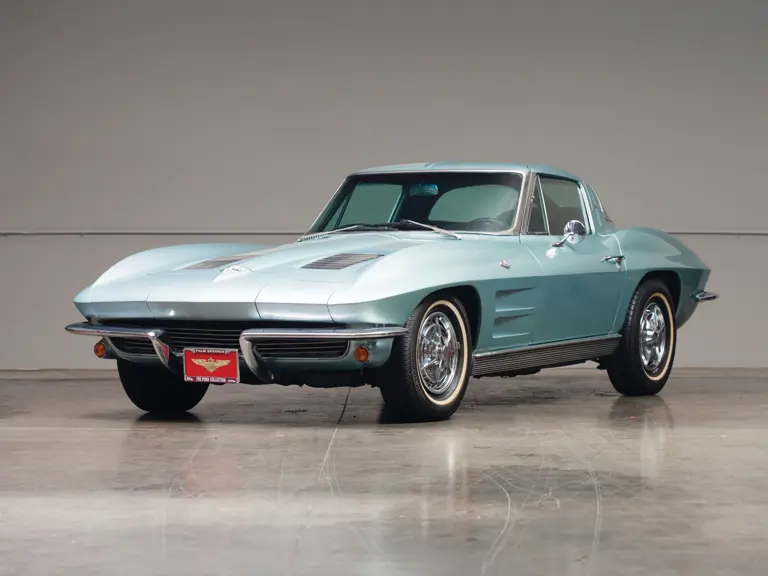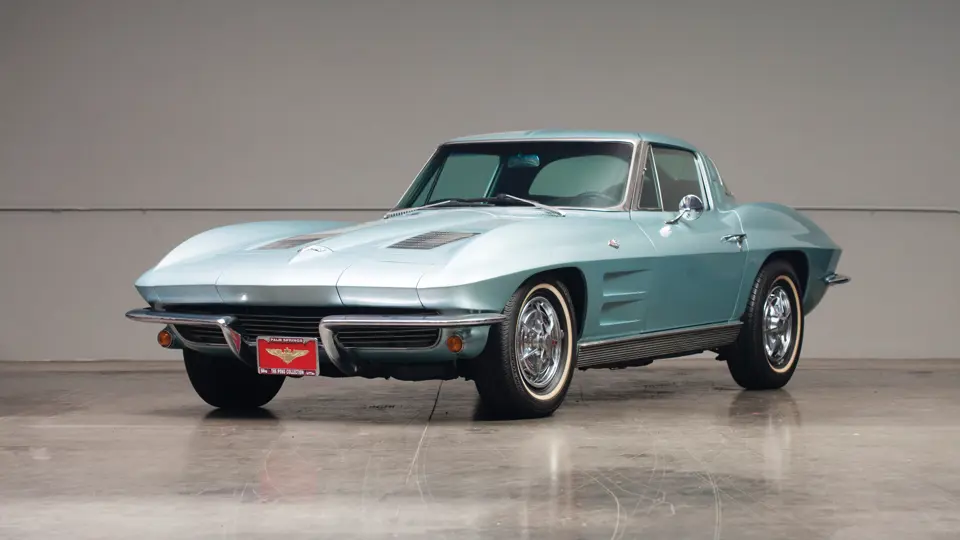Corvette’s second generation was the highlight of the 1963 model year. Called “Sting Ray,” for its shape, it was the work of GM styling vice-president Bill Mitchell. Retaining the uplifted tail of the 1962 Corvette, Mitchell penned a lovely fastback coupe, Corvette’s first, accented by a split rear window. This feature, which inhibited driver visibility and was soon changed, has made the ’63 model the most sought-after among collectors. Hidden headlamps, the first on an American car since the 1942 DeSoto, were located in the leading edge of the nose.
A clean-sheet-of-paper design, aside from the small-block V-8 engine, the Sting Ray featured independent rear suspension, the brainchild of engineer Zora Arkus-Duntov. A chassis-mounted differential drove halfshafts, their hubs suspended with a transverse leaf spring. Brakes were still drums all around, but sintered metallic linings were offered, as were finned aluminum drums.
This 1963 split-window Corvette Sport Coupe has undergone some modifications that are barely visible from the outside. It has a slight forward rake, the result of some unexplained chassis changes. Although the engine compartment is clean and well detailed, the engine itself is reportedly a 350-cid unit from a Camaro. The transmission is a four-speed manual.
The interior is let down by seats that are extremely worn, with many split seams. Although the original radio is in place, it is supplemented by a Sony AM/FM/cassette stereo hung under the dashboard, with speakers in the luggage area.
This car could be enjoyed as is – it looks the part of a split-window coupe. Alternatively, it could serve as the basis for an ambitious restoration.



 | Santa Monica, California
| Santa Monica, California


